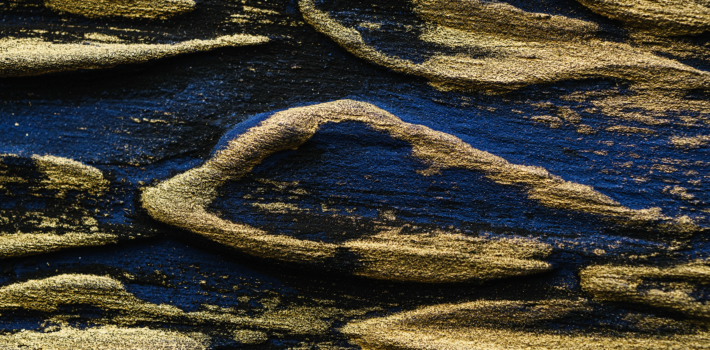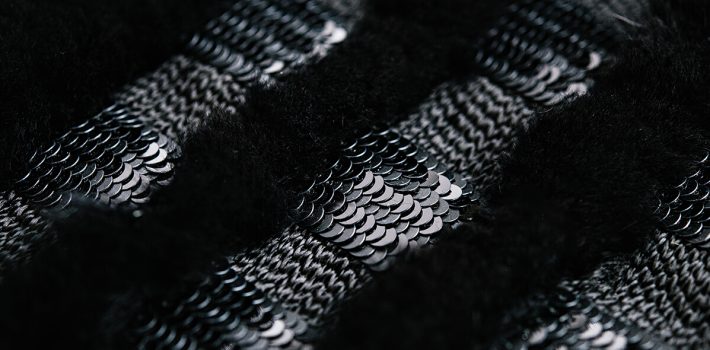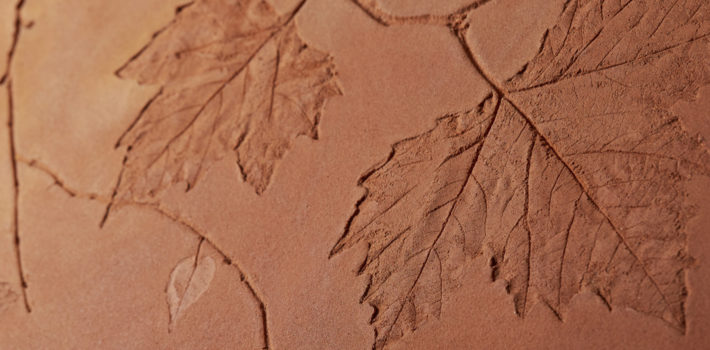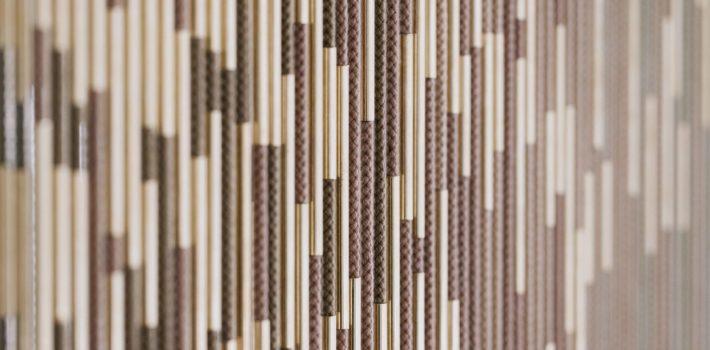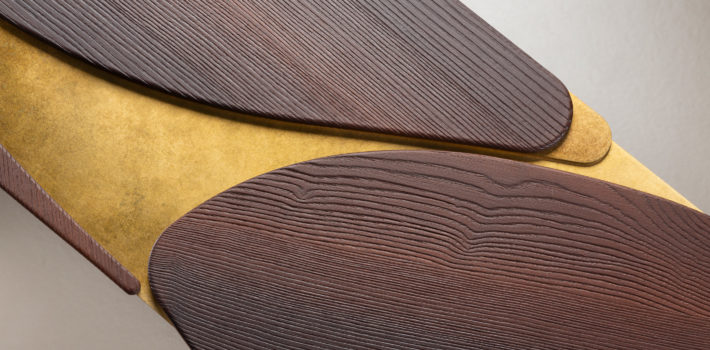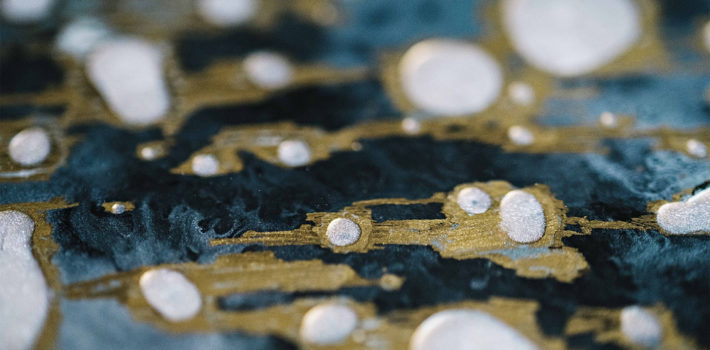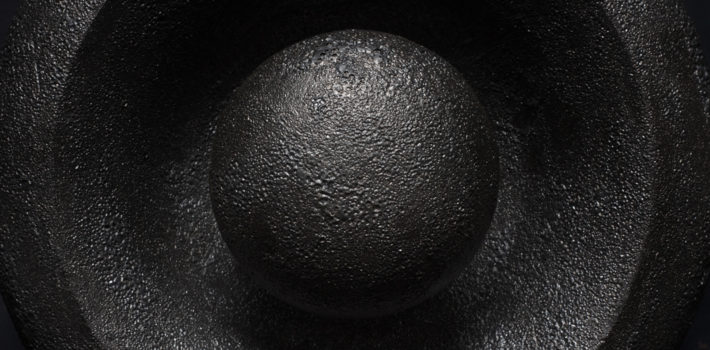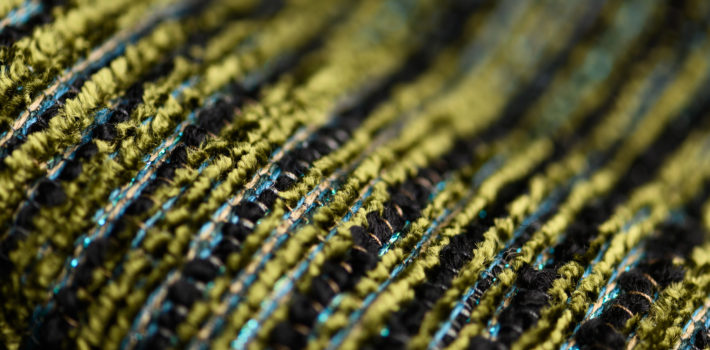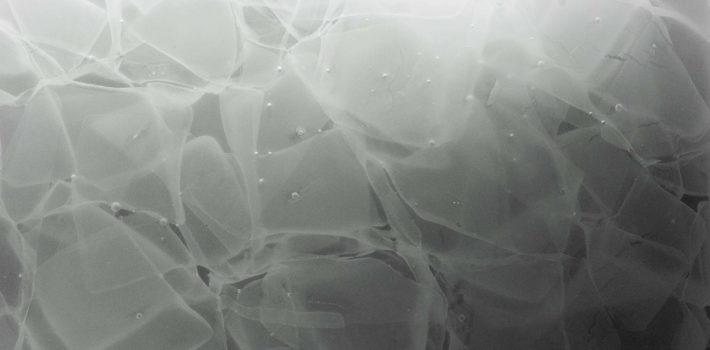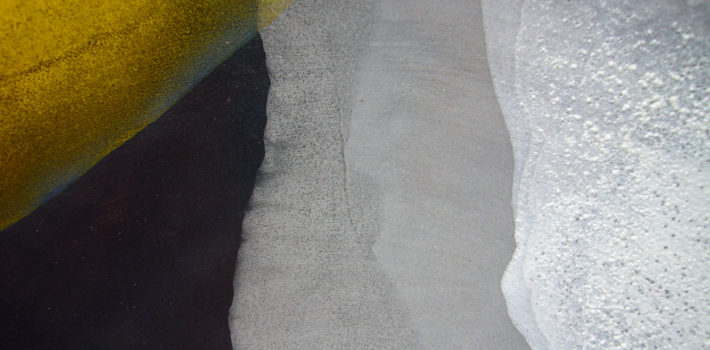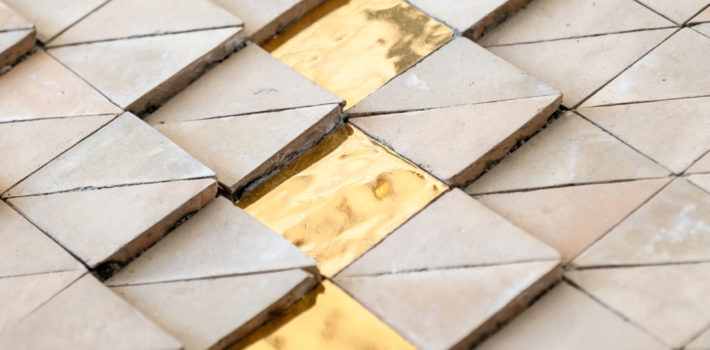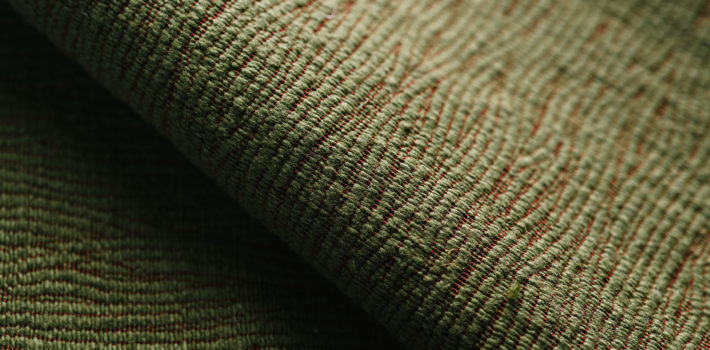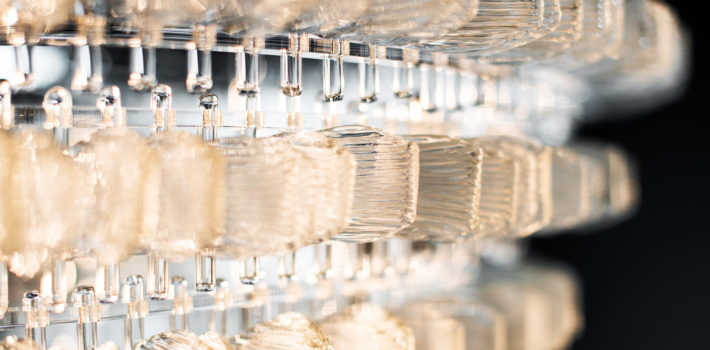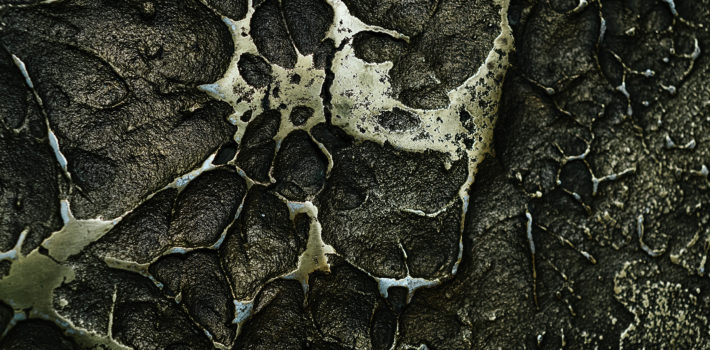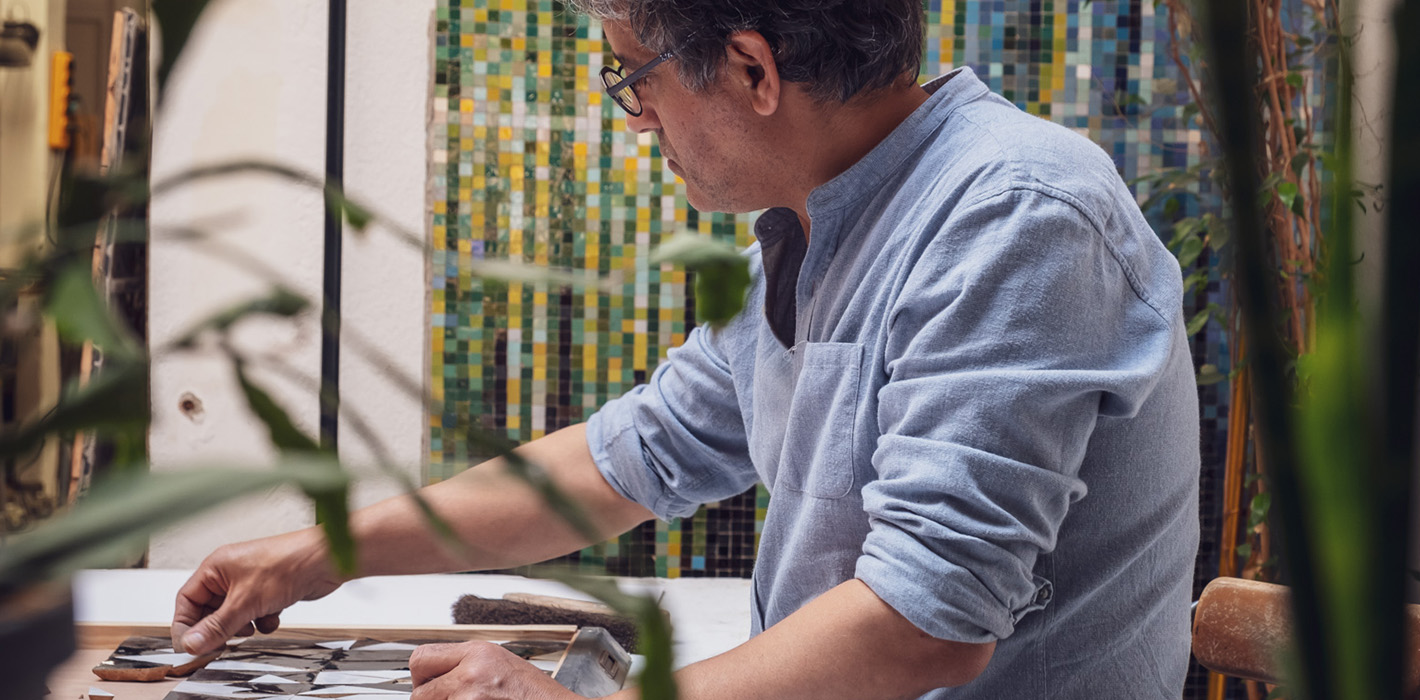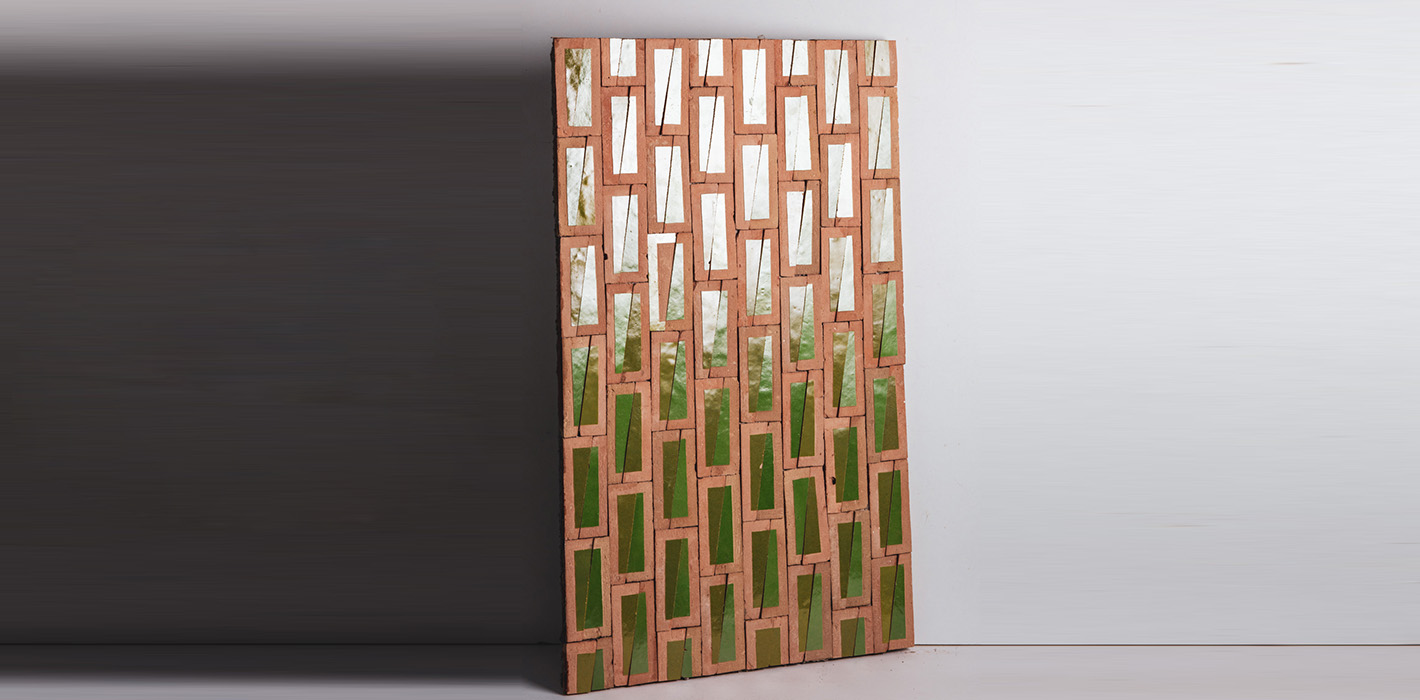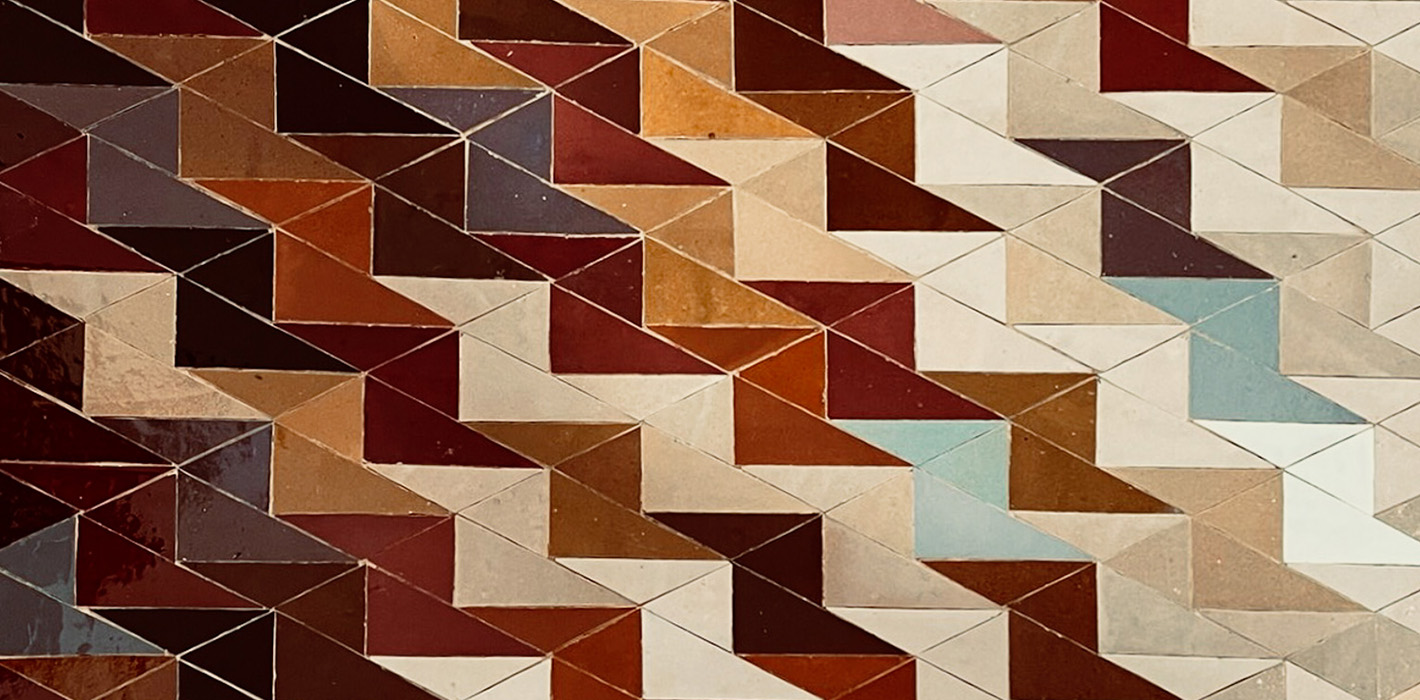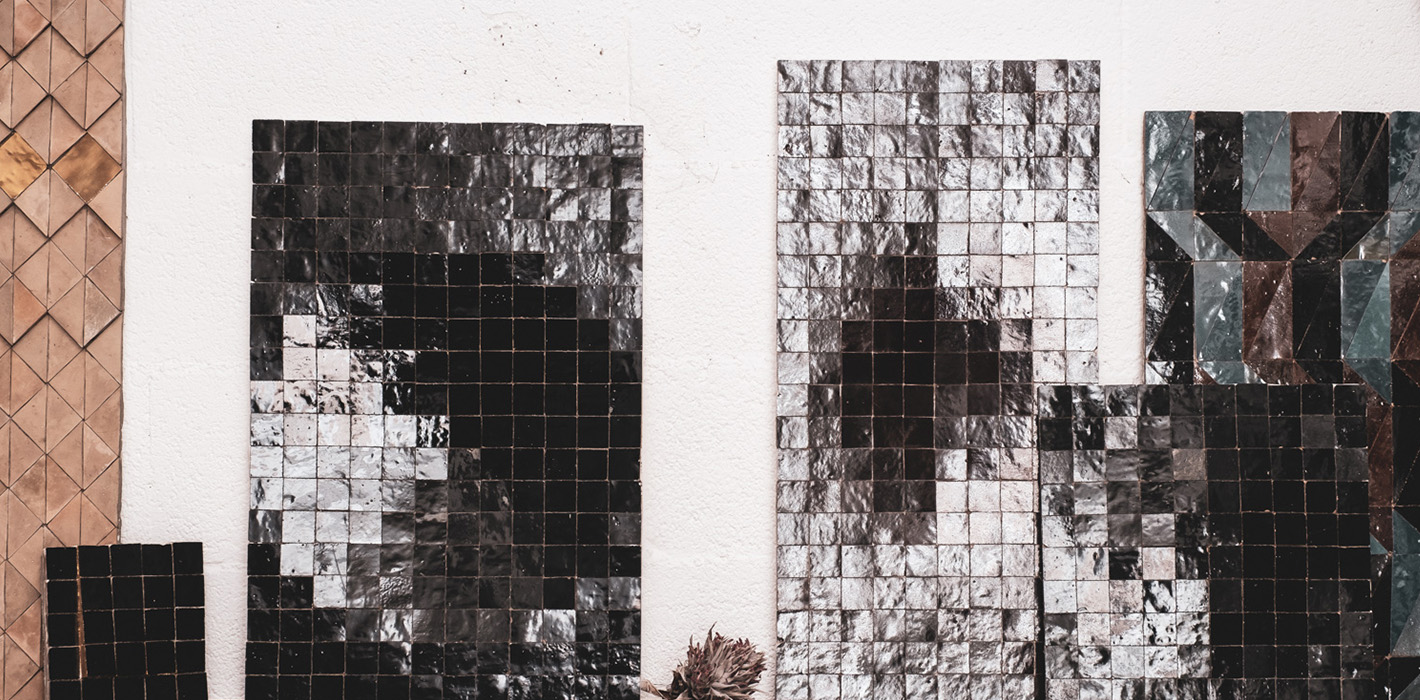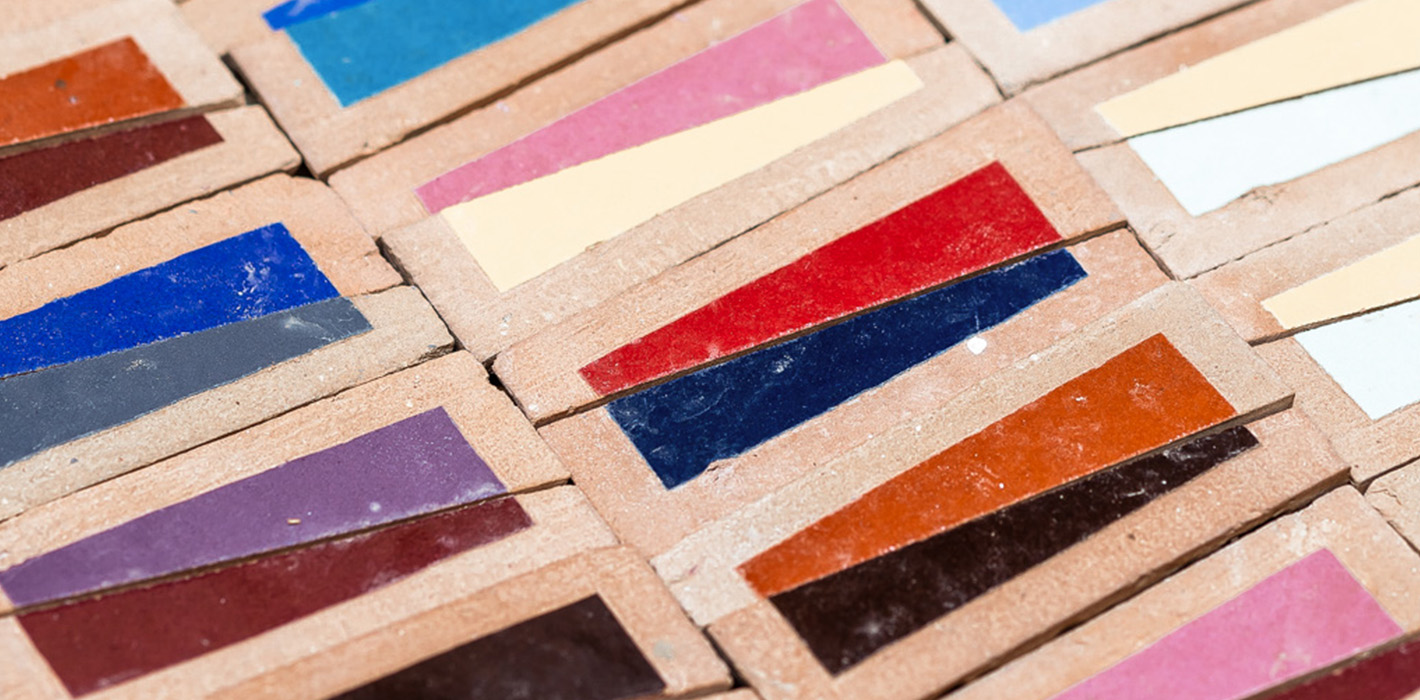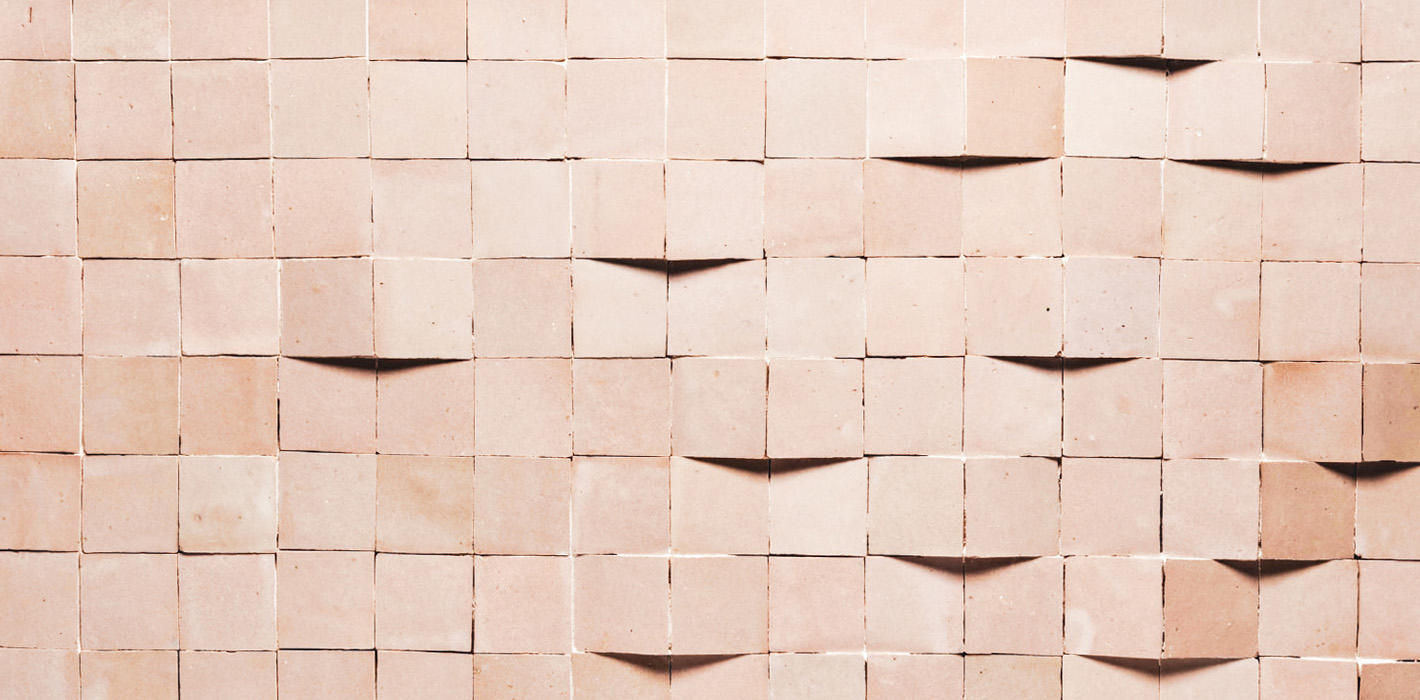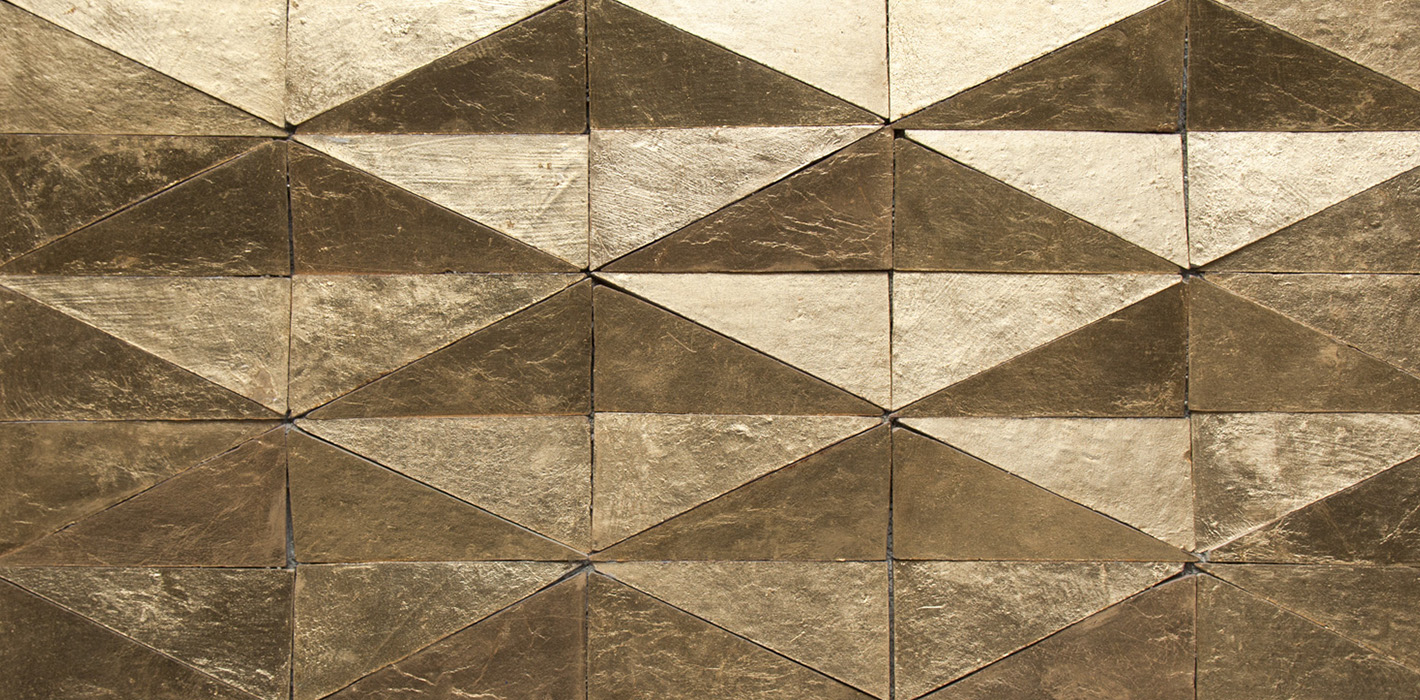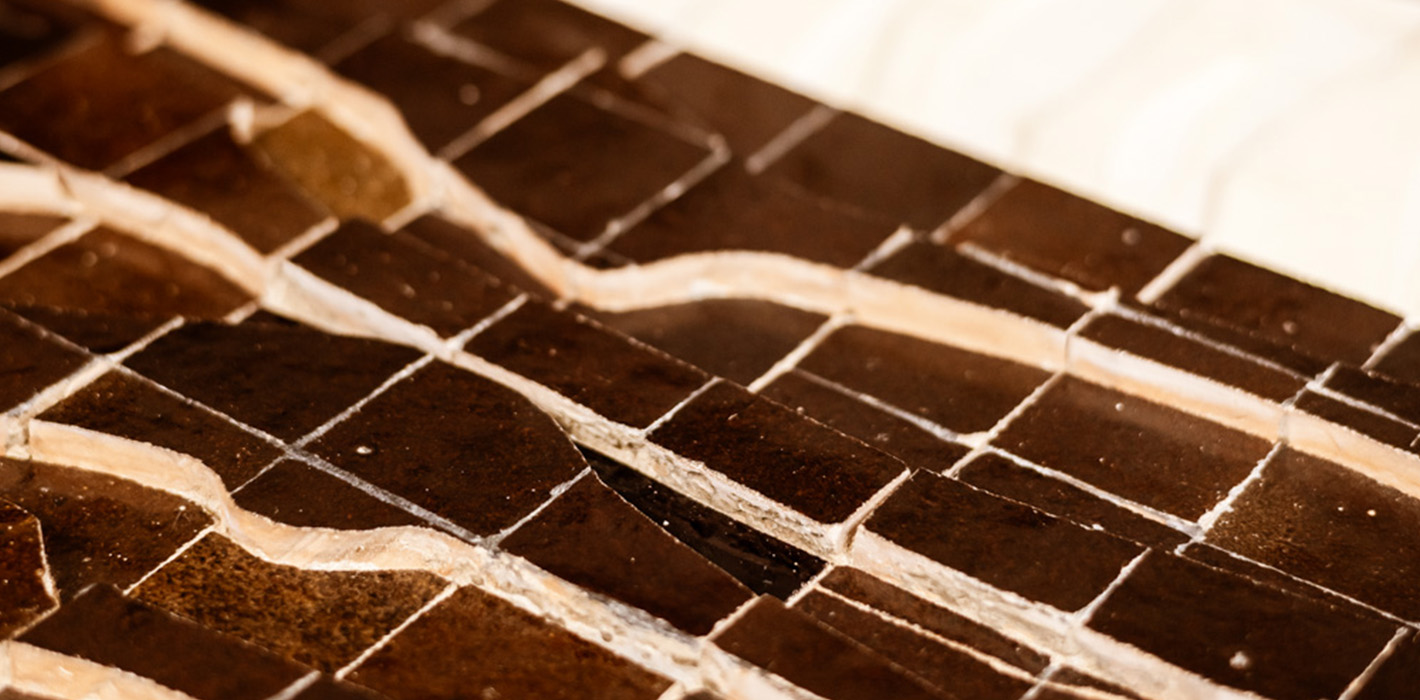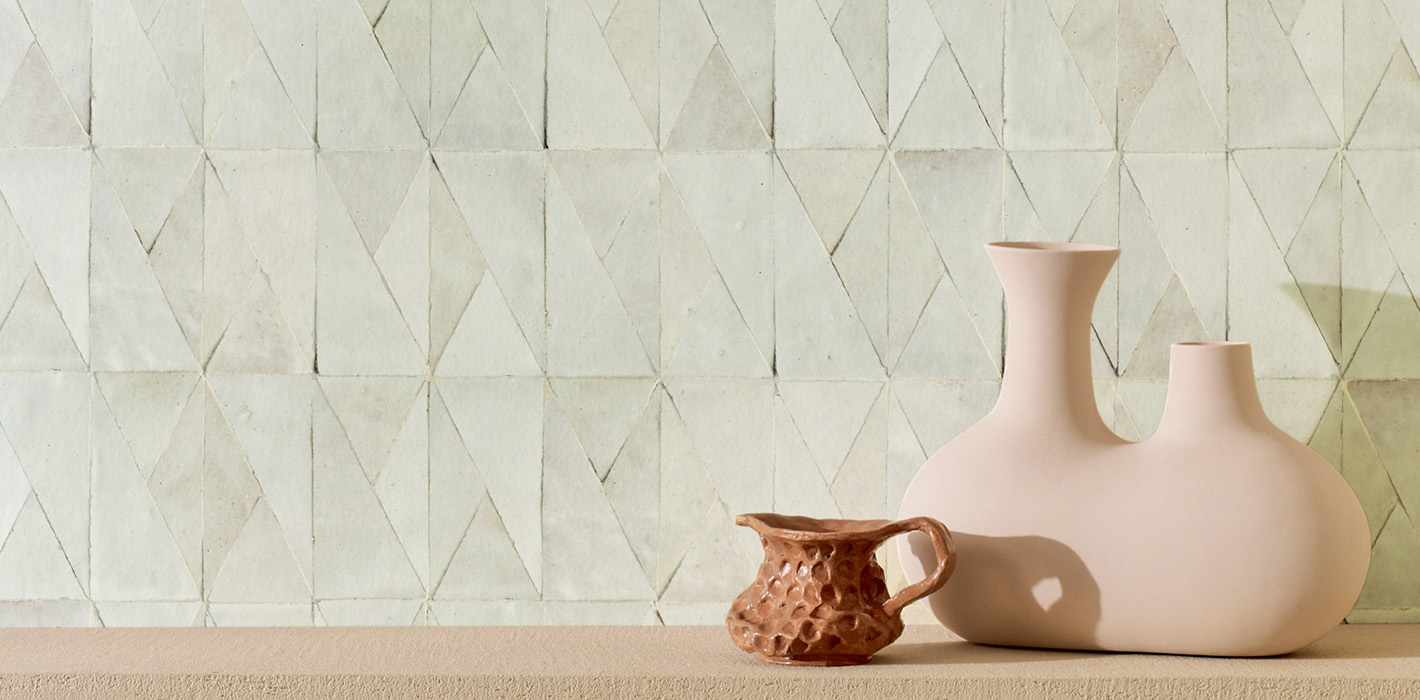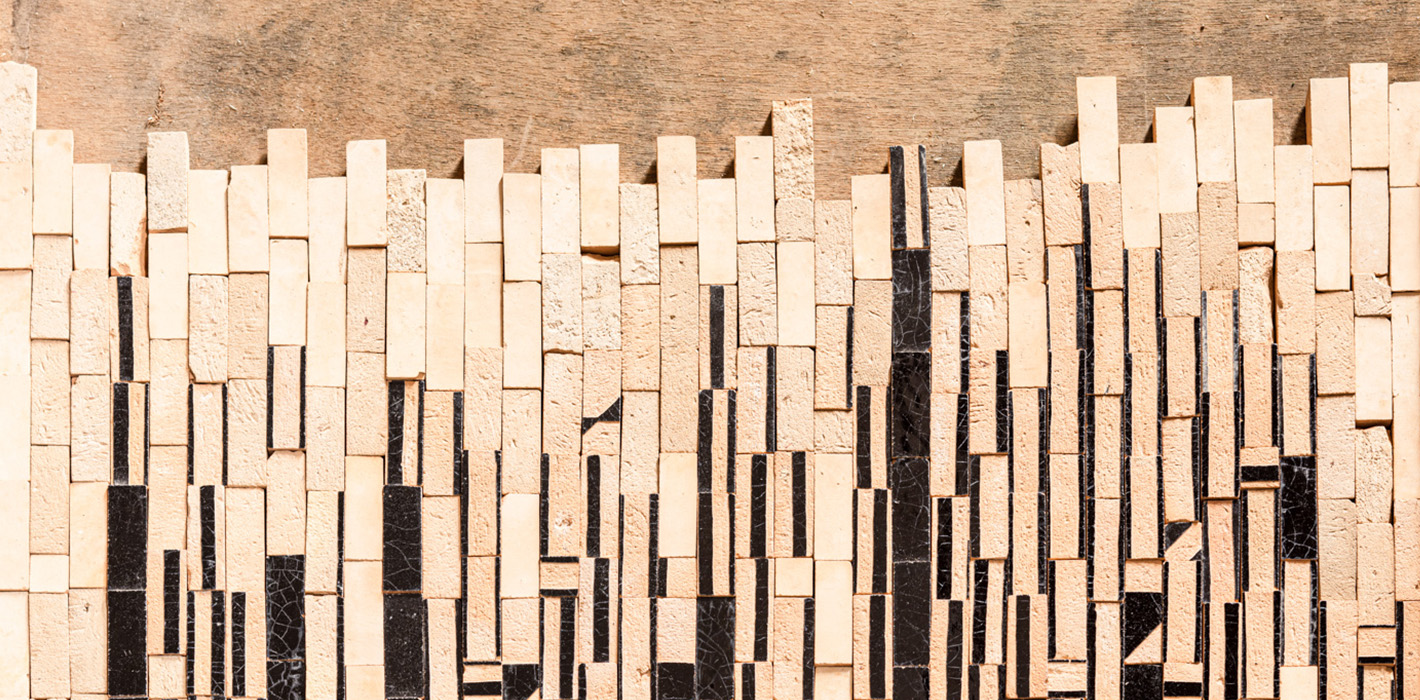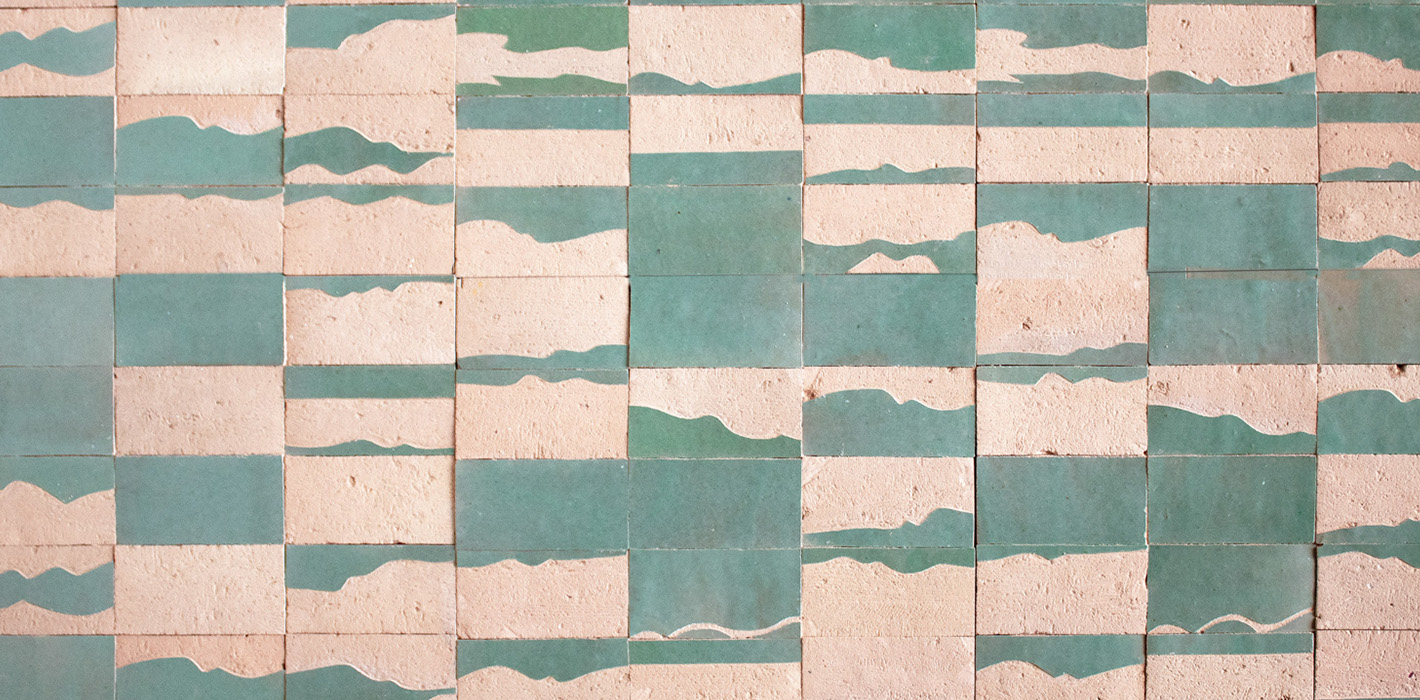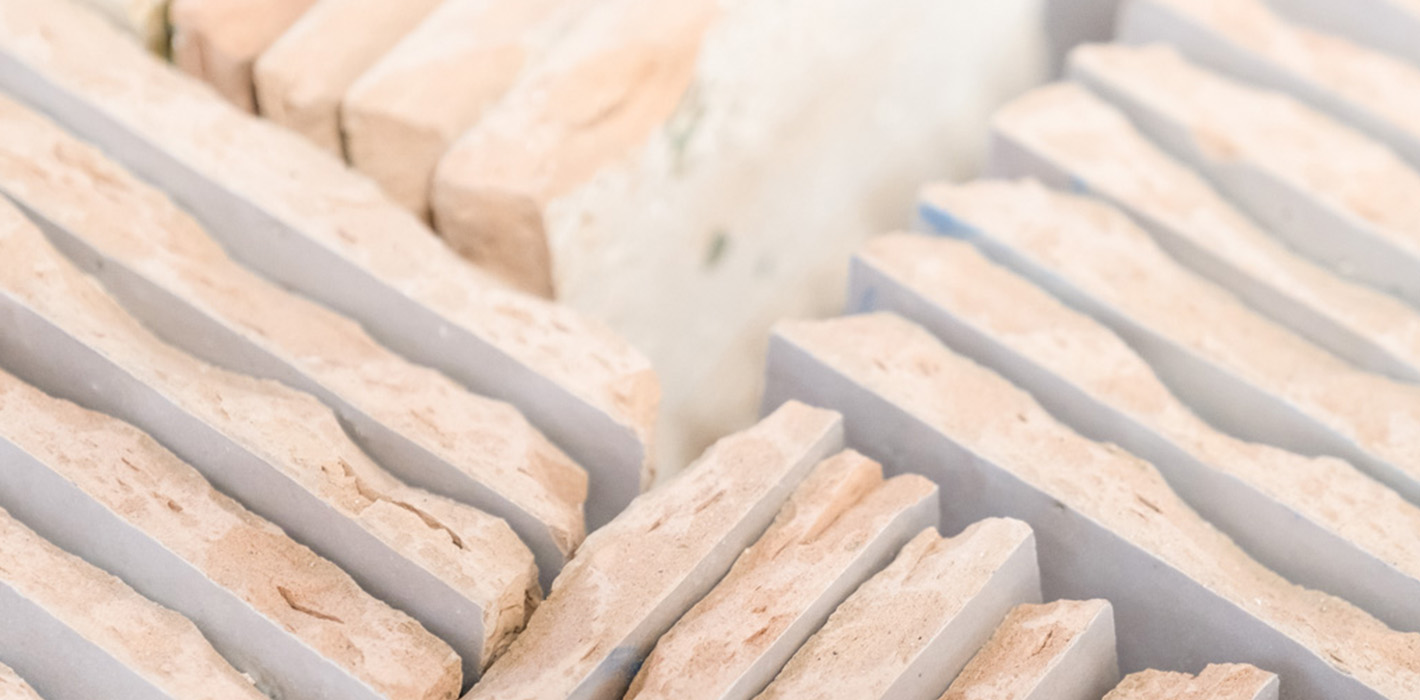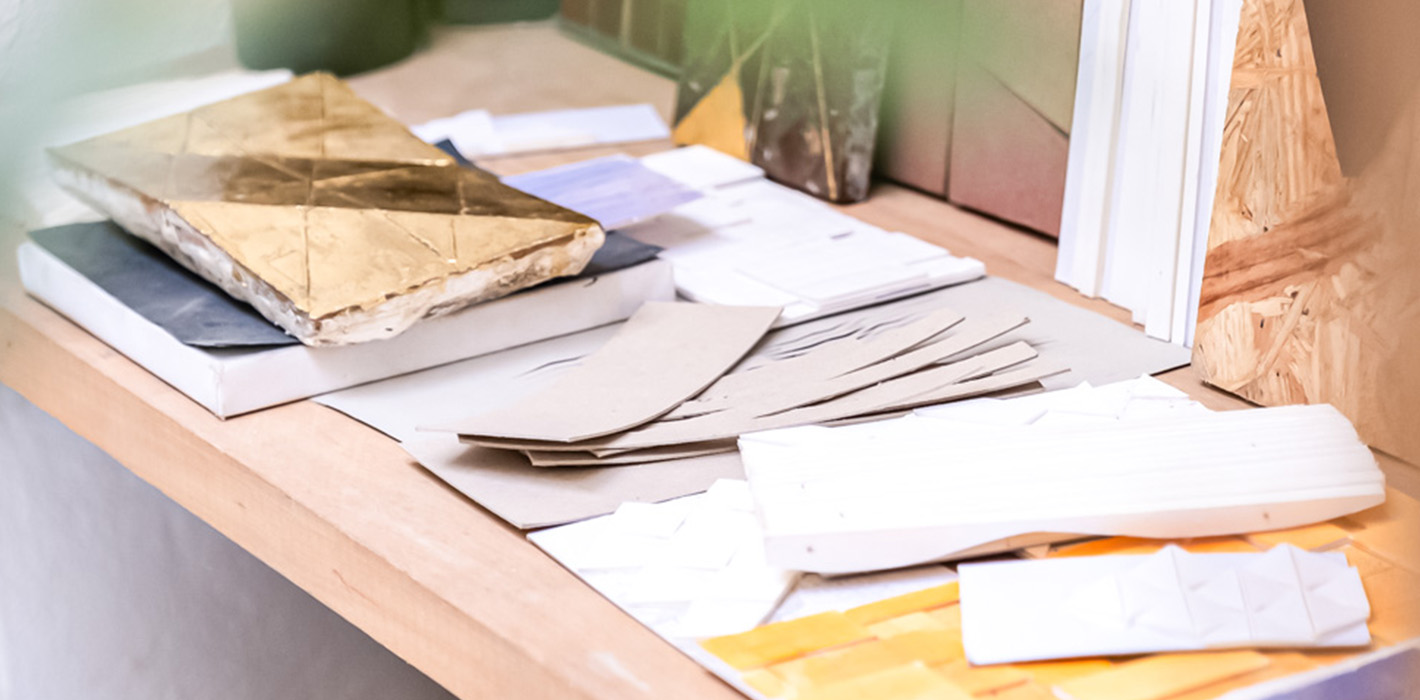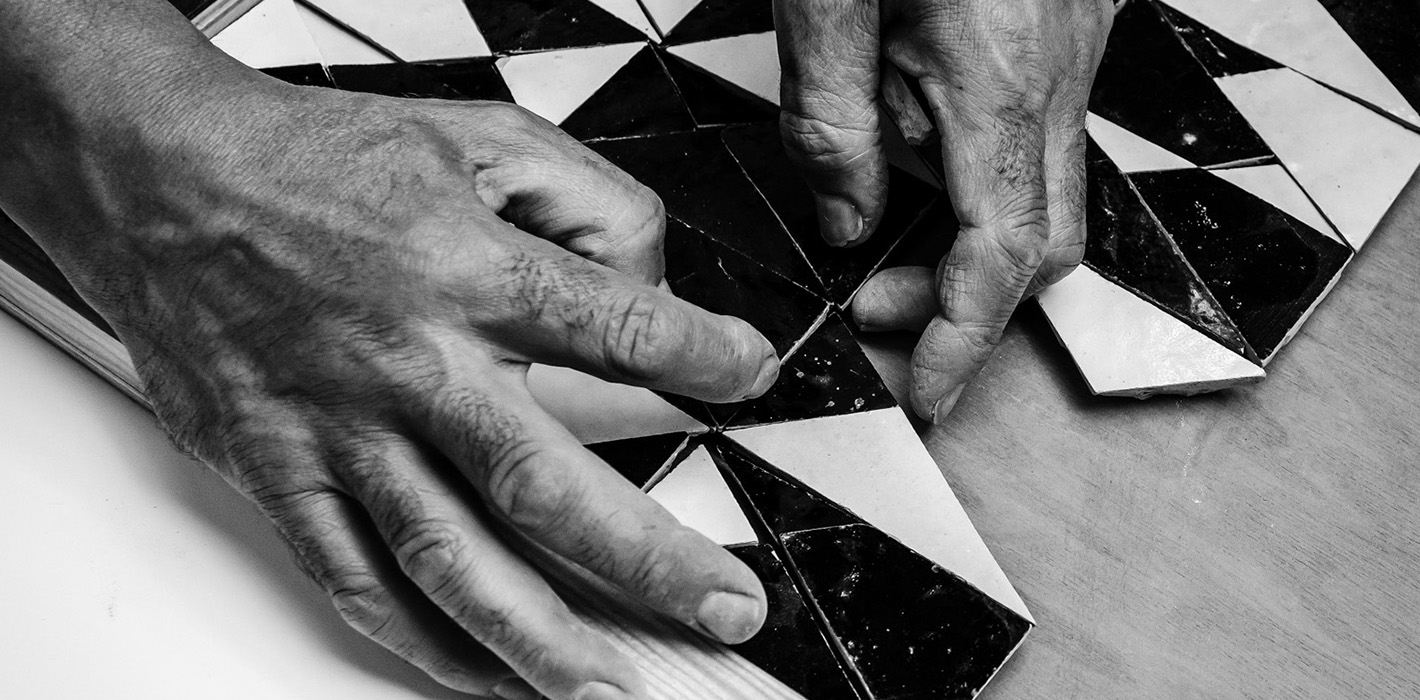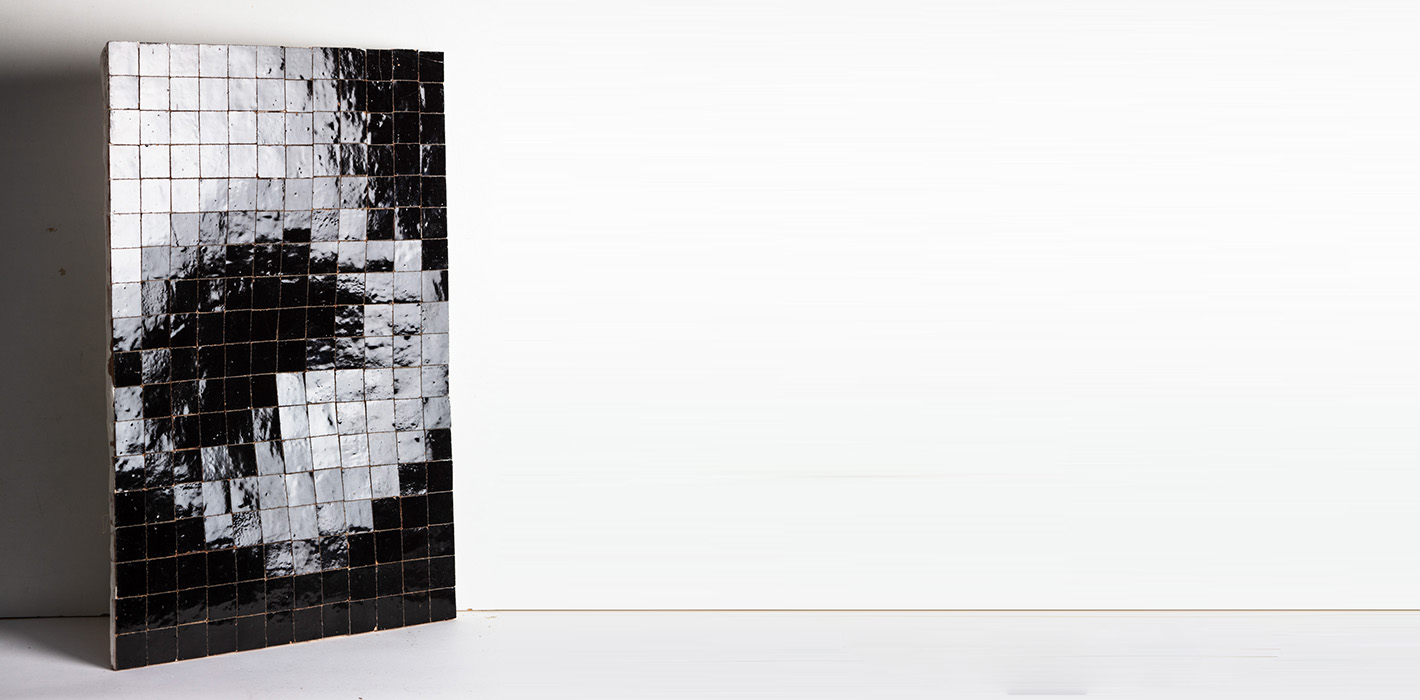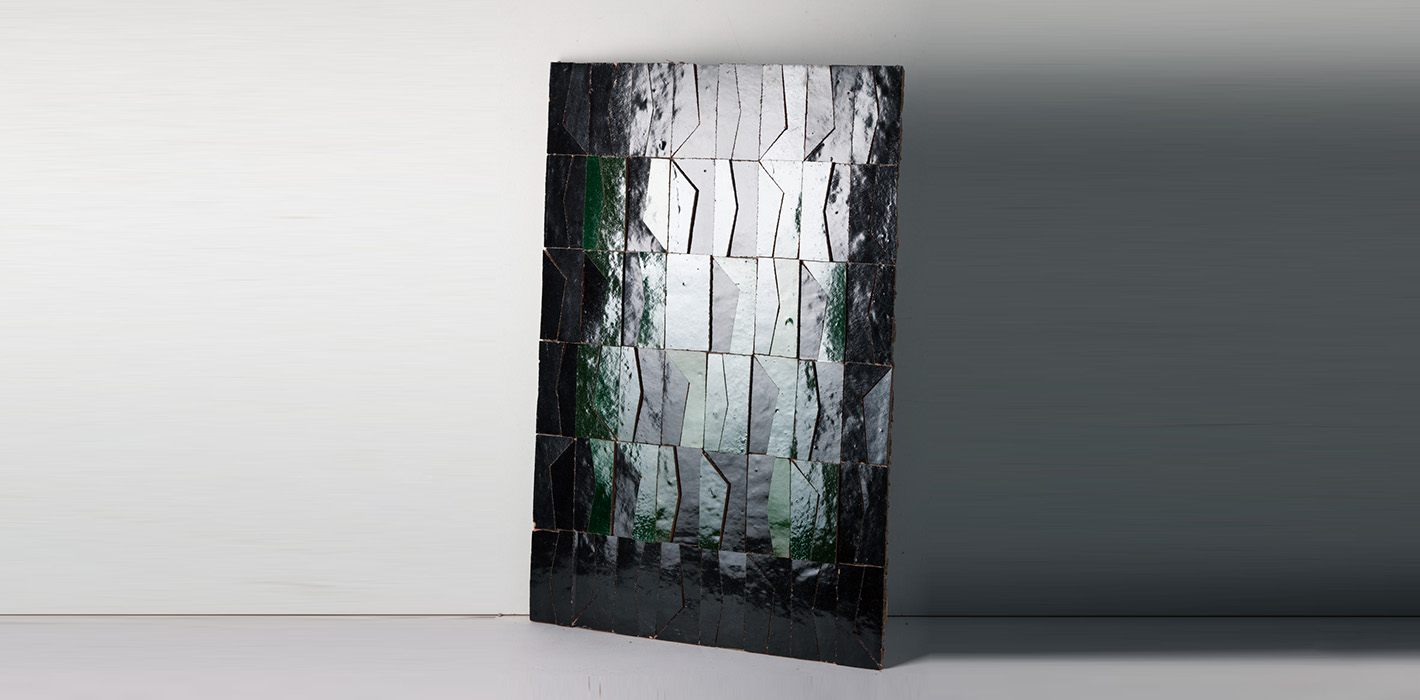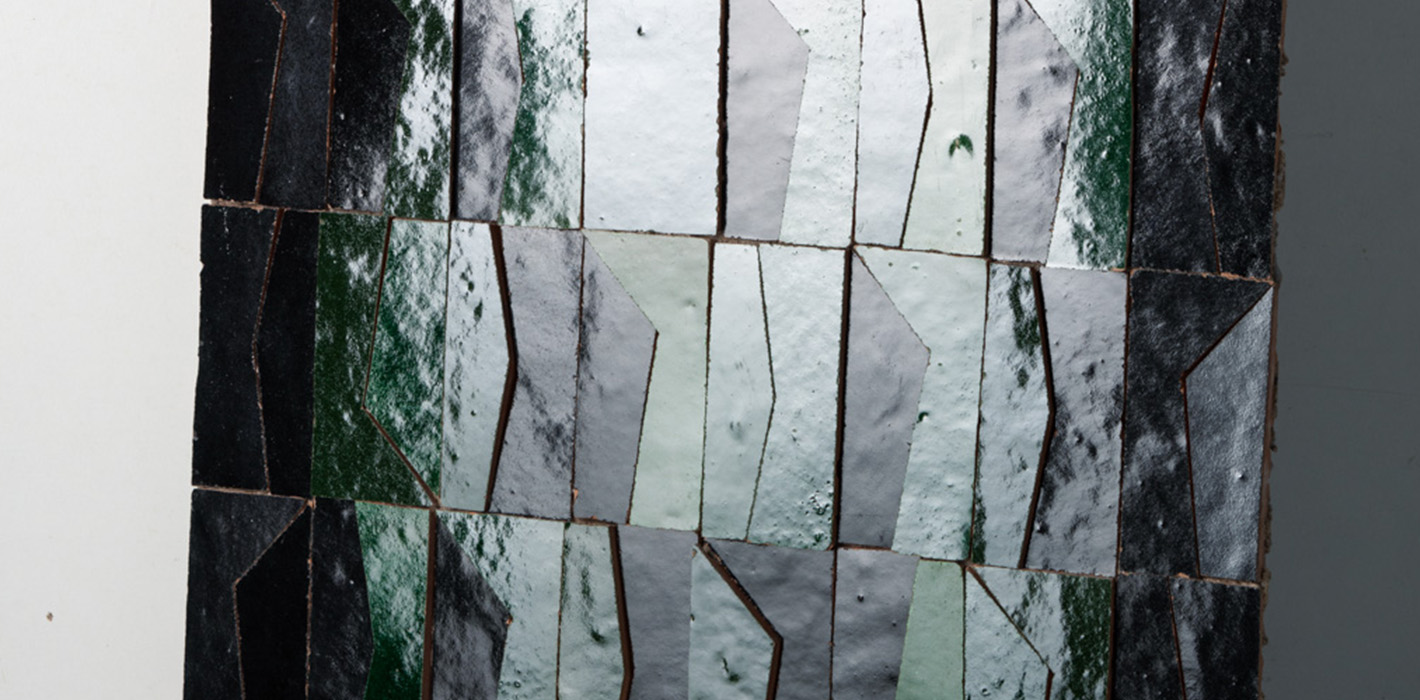Samir Mazer
Artist and Designer of Exceptional Surfaces
It is a story of a meeting between two souls: that of the artist and that of zellige. Discover the unique journey of Samir Mazer, artist-designer and artistic director of Ateliers Zelij. Immerse yourself in his passion for experimentation and the elevation of this ancestral art, where everything begins with the very nature of the clay from Fes.
What is your background?
I was born in Tetouan, in northern Morocco, in a family environment that nurtured my love for reading, from international literature to art history, geopolitics, and the sciences. I was interested in everything. This early intellectual emancipation led me down various paths of academic study. From biology to a brief stint at the Casablanca School of Fine Arts, I eventually found solace in different workshops of Moroccan artisans; unable to conform to an academic path, I became fascinated by the intelligence of craftsmanship.
In what year did you create Ateliers Zelij? How did this adventure begin?
In 1995, I founded my first company in Morocco, specializing in furniture design. Its name, “Zelij,” was chosen because, in my view, this material alone encapsulates the quintessence and excellence of Moroccan craftsmanship, the artisan’s genius. Basket weaving, ceramics, wrought iron, stained glass—at that time, I was exploring many traditional crafts still very much alive in northern Morocco, developing small-batch furniture collections. However, I had not yet found the opportunity to commercialize these early designs. That opportunity came in 2000 when I enrolled in a Master’s program in Industrial Design in Toulouse. There, I met Delphine Laporte. She became my partner in both work and life, forming an unmatched synergy where my artistic mindset harmonizes with her entrepreneurial vision. In 2003, we founded « Ateliers Zelij » together, a natural progression from my first venture, with the same ambition to explore the richness of Moroccan craftsmanship and develop furniture. At the time, working with zellige as a material was still a dream because I knew the workshops in Fes were inaccessible to outsiders. Little did we know that this journey would lead us to become specialists and key ambassadors of this exceptional material. By developing pre-assembled, calibrated, and easy-to-install patterns, along with small-batch product designs, we were selected by Margriet Vollenberg for the Ventura Lambrate de Milan en 2016. This was an incredible springboard that allowed us to connect with the top agencies and opened the doors to international markets.
Why did you choose zellige as your medium of expression?
Zellige has been with me since my early childhood in Tetouan. I still remember the path from my home to school, entirely lined with zellige-clad walls, higher than I was at the time. Beyond the traditional patterns that make Moroccan zellige renowned, it is the material itself—with its ability to reflect light and its unique sensoriality—that captivates me. It drives me to bring this craftsmanship into new dialogues that I am constructing today. Trained in both sculpture and industrial design, my approach is unconventional, sitting at the crossroads of these two disciplines. It seemed important to me to explore Moroccan zellige, specifically the technique from Fes, because the possibilities and creative opportunities it offers are vast. I also wanted to challenge the traditionalist approach, feeling the need to move beyond the conventional lexicon, to explore new avenues, and to develop a new dialectic. The subtle hues and the very nature of the Fes clay—formed through a long manufacturing process—give zellige an unparalleled richness and sensuality.
Why then burden it with norms, mixing colors and shapes to the point where the material loses its soul?
I have always preferred working with monochrome to highlight the material’s subtleties and the richness of this terracotta. I focus on the material itself, relying on the simplest and purest geometric forms: the nobility of the material and the simplicity of the shapes. Free from its traditional aesthetic codes, zellige reveals its primal sensuality. In this process, two key principles guide my approach: an economy of gesture through minimalist forms, and an economy of material by reducing waste as much as possible. No compromises, no room for embellishments—why burden the process when the magic already happens on its own?
You are committed to showcasing and preserving this technique. Could you explain your involvement?
For nearly 30 years, I have sought to free zellige from its traditional aesthetic codes of ornamentation, in an attempt to reveal its deep, archaic, and sensitive nature. To me, zellige is more than just a craft—it’s an art. Revealing its true essence requires a process of deconstruction from the tradition that paralyzes it. In some ways, I aim to emancipate myself from it to find a path toward renewal. Although I am detached from the ornamental motif tradition, I remain deeply anchored in the spiritual strength of this art. Tampering with traditional aesthetic codes is a delicate exercise. However, preservation alone is not enough to keep our culture alive. Simply reproducing what has been beautifully done in the past is insufficient. Beyond mastering a craft or an art, it is essential to continue experimenting, as our predecessors did, to open new pathways and remain connected to the world around us. Experimentation is also the most meaningful way to transmit knowledge.
Now that Ateliers Zelij is well established, what direction do you want to take?
In each of the patterns designed for Ateliers Zelij, before creating a “standardized” motif, there has always been an artistic and experimental approach—a kind of performance with the material, a space of complete freedom where improbable combinations, shapes, and textures are born. These combinations are then adapted and assembled into modules, which are enhanced through repetition. These accessible models allow our clients to work independently, adjusting the patterns and colors to fit the scale and vision of their projects. Today, I want to expand this experimental space to new opportunities, such as my collaboration with Asteré in 2021 for a capsule wallpaper collection produced by Élitis, or the partnership with the Ombre agency, where I opened the doors to my universe for the creation of the Shimenawa collection. I also want to develop *in situ* projects, like those commissioned by Atelier 27 Paris , where the works resonate fully with a specific location. Zellige has so much to express, and its unique plasticity, especially when combined with other techniques such as molding or chiseling, offers endless possibilities. My recent exhibition at the Salon Révélations Paris showcased this plastic journey. From totems suggesting bodies in motion to prototypes created for exceptional projects, the exhibition illuminated this new direction—and it’s this field of possibilities that I now wish to explore further.
What artistic collaboration would you like to pursue?
The creative space in my workshop has become somewhat restrictive. My atelier is filled with hundreds of compartments, each holding a wealth of ideas—patterns, textures, volumes. I now dream of seeing these expressions take shape on a larger scale, whether on furniture or monumental surfaces, and perhaps even in outdoor spaces, as nature is my primary source of inspiration.
Why did you join Collection Latil?
Delphine and I have followed Collection Latil since its inception, intrigued by this “exclusive & collective” concept. Being based between northern Morocco and southern France, we enjoy a privileged working environment but sometimes feel isolated from our clients and collaborators. For some time, we had felt the need to join a collective, but hadn’t yet taken the time to pursue this search. Our collaboration with the agence Ombre provided the perfect opportunity to connect with Collection Latil. It felt like a natural fit, as our values align so well: a small, human-sized team, a deep sensitivity to materials and excellence, and, of course, a shared international outlook.
